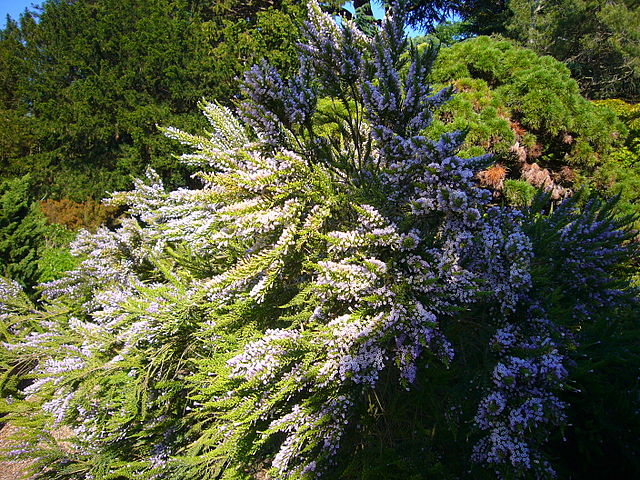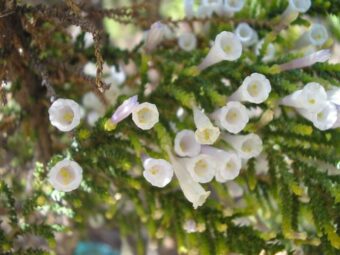In this article, we will discuss how to grow the unusual and rare shrub of Fabiana in containers. Fabiana is a relatively large genus of flowering shrubs that belong to the Solanaceae (the nightshade) family, where experts disagree on how many species exist. Some will say 15, whilst others say 36, it is hard to be certain if the experts cannot agree. A lot more research is needed in the group to get a better idea of classification.

The plants are native to the mountainous region of South America, they are evergreen shrubs that look like tall tree heathers (Ericas). They have small, needle-like green leaves and in late spring to early summer, the stems are covered with small blooms. The blooms do make the shrub look like tree heather. The petals on close inspection are fused together to form an open mouth tube and not the bell-shaped ones often associated with members of the heather family. The flowers are honey-scented as well, so adding to its appeal.
Find out how to grow the shrub of Fabiana in containers in this article.
GROWING FABIANA IN CONTAINERS
First, choose a container that is well-balanced and will suit the plant in question. The container you choose must have plenty of drainage holes at the bottom to allow excess water to drain away.
To aid it even further, you should add a 2cm layer of gravel and on top of this, add up to 5cm of the rim with ericaceous compost.
Dig a hole at the centre of the container slightly bigger than the root ball it came in the original housing container. Drop the plant in so that the top of the root ball is at the same level as the top surface of the compost. Backfill with the growing media so no visible gaps remain, using more ericaceous compost if necessary. Firm the plant in and water well.
BEST GROWING CONDITIONS
For the plant to do well make sure it is in a well-sheltered spot, away from the cold winds or hard frosts in a sunny location. A sunny south–facing spot near a wall is ideal.

The plant will need to be watered well in dry conditions, especially so when a heatwave is being forecasted. It is best to water when 5cm below the top surface of the compost feels dry to the touch. When you do water, it is best to do so with rainwater to prevent the compost from being made alkaline in hard water areas.
Not a particularly hungry plant and it is best to feed if your plant is showing obvious signs of nutrient deficiency. If it does, you may find it useful to give a liquid ericaceous fertilizer at the recommended dosage.
Pruning is not necessary but you can cut back lanky growths or unwanted branches in July after flowering.
To propagate, you will need to take softwood cuttings in summer and place them inside pots full of ericaceous compost. These pots will need to be placed in a propagator and need to be planted out once they have successfully rooted. This could be sometime the following year.
PESTS AND DISEASES
The good news is that the plant does not readily suffer from pests and diseases. This, along with the ease of care, makes them an excellent container plant.
VARIETIES TO GROW

The only species you are likely to find growing in the UK is Fabiana inbricata. This is a slow-growing shrub, only growing 2m in ten years. It produces white flowers in late spring to early summer. The flowers give the plant a plume-like look and are produced in such large numbers that it looks like it is a single flower head.
For containers, the best variety is ‘Prostarata’ that only grows up to 1m tall and is hardier than other species. The white flowers are tinged mauve. The other, more common variety is ‘Violacea’ which grows up to 2m high and has lavender-coloured flowers.
CONCLUSIONS
In this article, we have discussed the rarely seen and unusual heath-like plant of Fabiana in containers, they are easy to grow, easy to look after and in late spring are covered in masses of white or lavender flowers. They are not only pleasing to the eyes but they are easy to look after.
If you have any questions or comments that you wish to make on growing Fabiana in containers, please do so in the comment box below.
Happy Fabiana growing.

